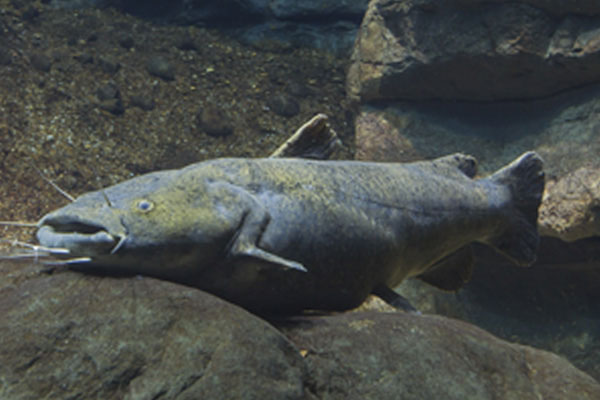America's 'monster fish': Weighs up to 56kg, is more than 1 meter long, eats all of its own species, making the authorities worried
US authorities are having a headache because of the invasion of this fish.
According to IFL Science, in the 1950s, fishermen in the western United States were introduced to a fish species originating from the Mississippi River and along the Gulf of Mexico to raise for food. After this fish was introduced into this country, people raised it in river systems along the Atlantic coast.
However, more than 70 years later, in 2023, the governor of Maryland had to call on the state government to declare that this fish was a fishery disaster in the rivers of the Chesapeake Bay. So what kind of fish is this? Why do they cause such "headaches" for US authorities?
The fish we are talking about is flathead catfish. They are being assessed by scientists as being on the verge of becoming the top predator in American rivers due to many factors.
First, let's learn about flathead catfish. Flathead catfish (Scientific name: Pylodictis olivaris) is a species of catfish in the order Pylodictis in the freshwater fish group of the United States.

Flathead catfish is a fish species that is considered a fishery disaster in the rivers of the Chesapeake Bay. (Photo: Pinterest)
Flathead catfish are also considered "river monsters" because fishermen once caught the heaviest individual with a weight of up to 56kg and a length of more than 1.55m.
Starting in the summer, flathead catfish dig burrows to make nests. They often dig burrows in riverbanks, flooded areas, under fallen trees, rock holes, and mud puddles. The breeding period lasts from mid-summer to mid-spring, when the water temperature rises to 21 degrees Celsius. They lay eggs in nests and protect them. Once it has laid eggs, it will not leave the nest, but will protect the eggs. When disturbed in the living space, this giant fish will attack the vandal.
Flathead catfish like to live alone, so they are more difficult to catch than other catfish species. Flathead catfish often hunt in ambush at night. They hide and wait for prey to pass by to attack.
The reason flathead catfish is considered an invasive fish causing widespread harm in US rivers is due to two factors.
First, flathead catfish are voracious eaters. When these fish are raised in river systems along the Atlantic coast, they are willing to eat any animal species that scientists are trying to conserve. "Flathead catfish will be one of the top predators in any system where they develop a population," said Joel Fleming, a biologist at the Georgia State Department of Natural Resources. anything that fits your taste ".

Flathead catfish eat anything that fits their mouth (Photo: Pixabay).
In 2016, an American fisherman caught sight of a flathead catfish trying to swallow its mate while the animal fought hard to escape. According to scientists, flathead catfish have poor eyesight and they often try to eat everything that moves. Therefore, flathead catfish are even willing to eat their own species. When fishing for this fish, fishermen must use large lures such as carp weighing up to 2 kg.
Second, the number of flathead catfish is growing strongly due to their fertility. Depending on their size, some females can lay up to 100,000 eggs per clutch. The males will protect these eggs until they hatch after more than a week. When the young reach 10cm in length, they will begin to learn to eat live fish.
American scientists say that if flathead catfish are allowed to develop freely, they will only need 30 years to destroy all native animals in river systems along the Atlantic coast. That's why they have warned authorities to encourage fishermen to report any flathead catfish they catch instead of releasing them into the water to protect the native ecosystem.
- 'Brain-eating monster' is less than 20cm long and eats 3,000 mice every year?
- The 5 meter long paddle fish is mistakenly thought to be a sea monster
- Man encounters a 4-meter-long 'monster' during a fishing trip at sea
- The 4m-long horned monster floated on the coast
- Headless skeleton of 6 meter long sea monster
- Finding new fish weighs more than 2 tons in the past 130 years
- A half-meter mouse may bite the coconut shell
- Giant monster in the Amazon River before extinction
- The 4.2-meter monster crocodile traps Australian hunters
- Giant 17-meter-long sea monster reveals the secret of 'miracle evolution'
- The most exotic species on the planet has a long nose like an airplane's supply hose
- Filipinos are worried when
 Animal 'suffering' after hibernation
Animal 'suffering' after hibernation Why do goats climb well?
Why do goats climb well? Scientists were surprised to see chimpanzees eating turtles
Scientists were surprised to see chimpanzees eating turtles Giant catfish died deadly due to drought in Thailand
Giant catfish died deadly due to drought in Thailand